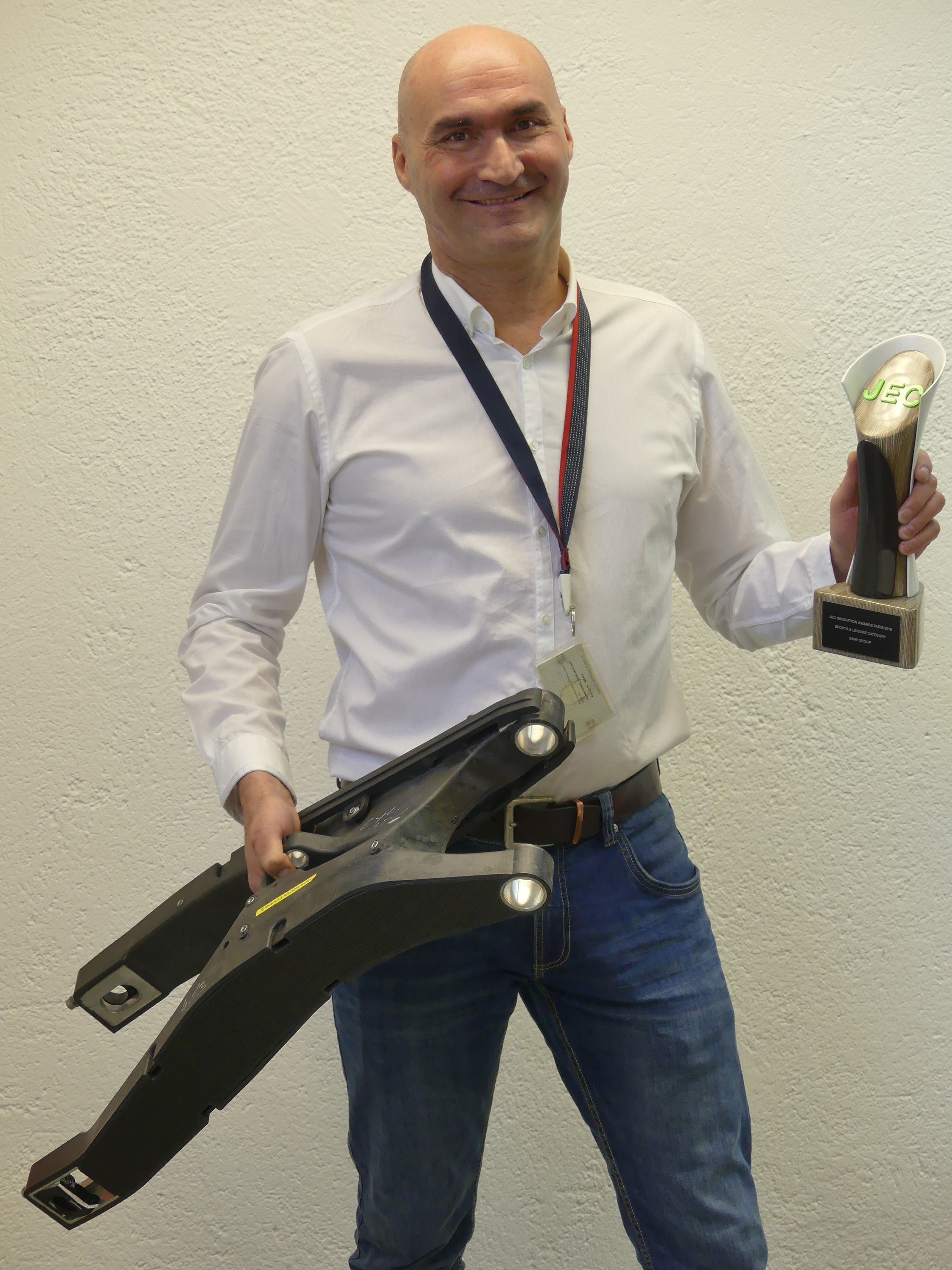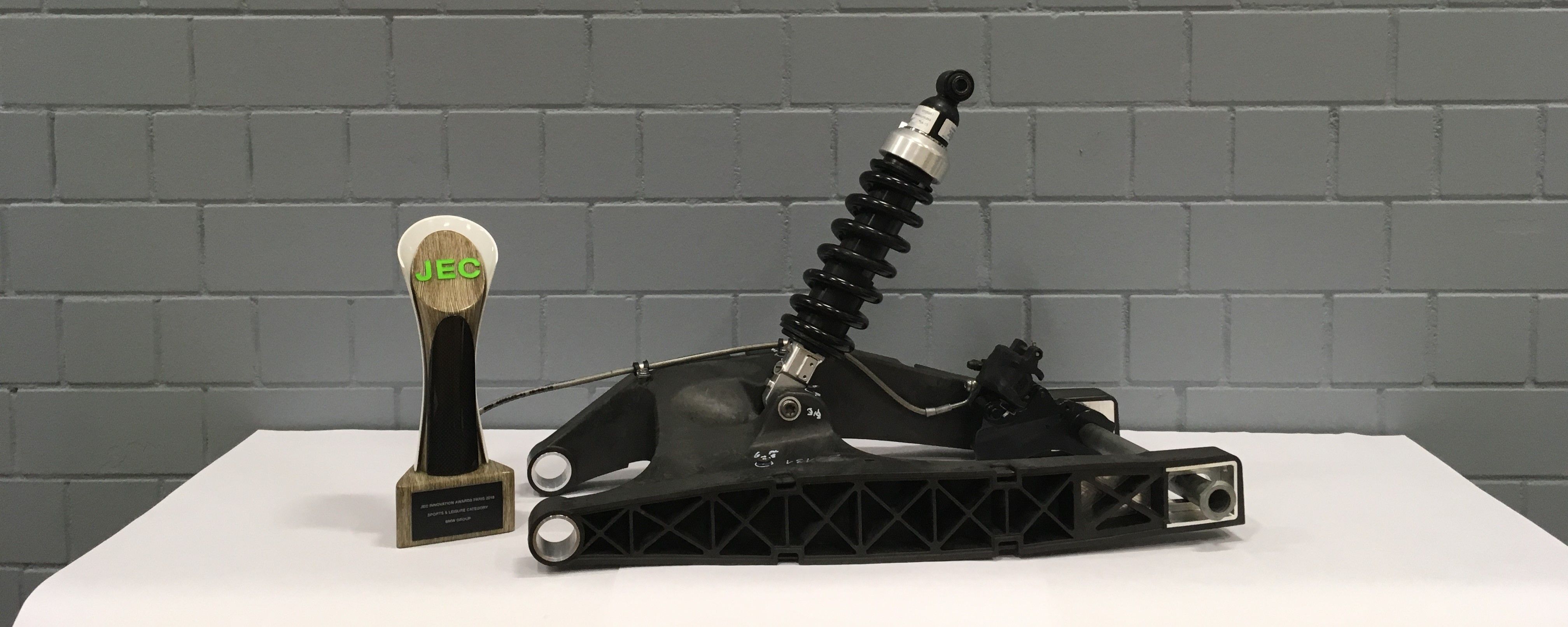The HP4 is an exemplary showcase of cutting-edge technology, exotic materials, skilled craftsmanship, design, and creativity. This tells us all about the experience, skillset and state-of-the-art know-how the folks at BMW have that make them rise above and beyond. Alas, all of this asks a hefty $78,000 affordable by just 1% of mankind.
Now, the same folks bring you an affordable way for the rest of the 99% to get all that carbon-fiber on to your motorcycle. And doing so, they have just received the 2018 JEC Innovation Award in the Leisure & Sports category for the development and manufacture of a rear swinging arm made of carbon fiber.
With its invention in 1860, Carbon-fiber has been one of the most sought after material for the aerospace and automotive industry for its lightweight and strength-to-weight ratio properties. The first time it was ever used on a motorcycle was only in 1994 when Cagiva produced the C194 500cc two-stroke chassis using carbon-fiber.
Today, carbon-fiber is embedded extensively in motorsport and expensive automobiles and motorcycles. People love the material so much as to even replace their non-functional parts of their machine with this exquisite material to gain the exclusive tag. It was, however, an an expensive affair. But not anymore.
Thanks to the German automotive giant who uses lightweight construction in both automobiles and motorcycles. The latest example from BMW Motorrad was the HP4 RACE, where the entire monocoque frame and chassis, wheels and a few other bits were made of carbon fiber reinforced plastic produced by means of an industrial RTM process.
Further enhancing this procedure, BMW have found a way to make this process cheaper for mass production. And their first example of the same is the carbon-fiber rear swingarm developed using a cost-efficient manufacturing process suitable for the large-scale production; using injection mold components made of carbon fiber reinforced plastic with CFP tape reinforcements using a thermoplastic material.
To reduce costs further, BMW also incorporated robotic welding. They chose to represent it with a motorcycle rear swing arm since the forces at work are immediately evident rather than a car chassis part which are otherwise concealed. This method of injection molding of the part with short CFP recycling fibers even allows for precise configuration of component properties by using a variety of composite and metal inserts.
"With this example of the rear swinging arm, the project has allowed BMW Motorrad to take on a pioneering role within the motor vehicle industry. The insights gained consistently build on the BMW i3 as the basis for the use of CFP in serial production and include interesting aspects in terms of the future development of new BMW motorcycles and automobiles.” Says Dr. Joachim Starke of BMW.
Making a cheaper alternative to manufacture carbon-fiber composites, directly affects future motorcycles that will be lighter than ever before allowing newer riding experiences and an exponential bump in engine performance figures.


